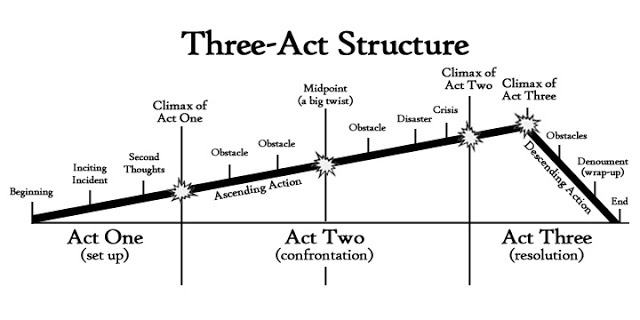
Romance novels are all about love stories that make your heart flutter and your imagination soar. When romance book writers sit down to write these tales, they often start with an outline. It is just like drawing a map before going on a journey.
Outlining helps you plan where your stories will go, who will be in it, and what twists and turns will keep the readers hooked. In romance, outlining is super important. It helps you create those unforgettable moments of passion and connection that readers crave.
Plus, it keeps everything organized and makes sure the story flows smoothly from beginning to end.
What Is a Romance Novel?
Romance novels are characterized by their focus on relationships, particularly romantic love, as the central theme. They often feature protagonists who experience emotional growth and transformation throughout the story.
The main aspects of any romance book include intense emotional connections between characters which often lead to profound personal discoveries and self-realization.
In addition to this, romance novels typically offer readers a satisfying resolution such as a happy ending or a hopeful outlook for the future.
Subgenres within the Romance Genre
- Historical romance: Transporting readers to different periods and settings.
- Paranormal romance: Incorporating supernatural elements like vampires or werewolves.
- Contemporary romance: Set in modern-day settings with relatable characters and situations.
- Romantic suspense: Adding elements of mystery and danger to romantic plots.
- Suggestive romance: Exploring intimate relationships with a focus on passion and sensuality.
- Fantasy romance: Introducing magical worlds and fantastical elements into romantic narratives.
Familiarity with Popular Tropes and Conventions
- Enemies to lovers: Characters initially at odds who develop romantic feelings.
- Second chance romance: Exploring the rekindling of a past relationship.
- Fake relationship: Characters pretending to be in a romantic relationship for various reasons.
- Forbidden love: Romantic relationships face significant societal or personal barriers, adding tension and drama to the narrative.
- Love triangle: Involving three characters entangled in romantic conflict and choice.
- Happily ever after (HEA): Providing readers with a satisfying resolution where love conquers all, often with a happy ending.
Pre-Outlining Preparation
Here is how romance writers prepare to outline their romance novels.
1. Researching the Target Audience
You must understand who you are writing for – before you get into the complexities of your story. Research your target audience involves knowing the demographics, interests, and preferences. You must know who your audience is, so you can tailor your story with them on a deeper level. It lays the foundation for crafting a story that captures their attention and keeps them, engaged throughout.
2. Developing Compelling Characters
Characters are the heart and soul of any story, spend time fleshing out your characters, giving them depth, flaws, and aspirations. Each character should feel authentic and relatable, drawing readers into their journey. Whether they are heroes, villains, or somewhere in between, compelling characters drive the plot forward and evoke emotional responses from your audience.
3. Establishing the Setting
The setting provides the backdrop against which your story unfolds. It could be anything like a bustling city, a quaint village, or a fantastical world, the setting sets the tone and atmosphere for your narrative. You have to pay attention to details such as time, geography, and cultural nuances to create a vivid and immersive world that readers can envision themselves in.
4. Choosing the Central Conflict
Every story revolves around a central conflict or challenge that drives the plot forward. The conflict might be internal, external, or a combination of both. But it must be significant enough to propel your characters through their journey. You must choose a conflict that aligns with your themes and characters to create tension and drama that keeps readers eagerly turning the pages.
Elements Of a Romance Novel Outline
What popular Romance Ghostwriting Services do is prepare an outline through the three-act structure. Let’s explore the model and learn more about it.
Introduction To the Three-Act Structure
Understanding the three-act structure is like having a blueprint for your romance novel.
- Act one sets the scene, and introduces the characters and their world.
- Act two is where the tension builds, conflict arises, and obstacles are thrown in the characters’ paths.
- Act three is the culmination, where everything comes together for a satisfying resolution.

Act One – Introducing Characters and Settings
Introduction of the Protagonist: This is where the best romance novel writers introduce our main characters and set the stage for their romantic journey. Here you introduce the main characters, especially the romantic leads, and establish their personalities, backgrounds, and goals. Give your readers a glimpse into their lives before they meet each other.
Initial Meeting: Set the stage for the romantic relationship by orchestrating the first encounter between the protagonists. This meeting should spark intrigue, tension, or conflict, laying the foundation for their emotional journey.
Conflict and Obstacle: Here you also introduce obstacles or conflicts that hinder the development of the romantic relationship. These can be external factors such as societal pressures, misunderstanding, or internal struggles like past traumas or insecurities.
Attention and Connection: despite the challenges they face, it allows the protagonists to experience moments of attraction and connection. You have to show how their initial impressions evolve as they begin to see each other in a new light.
Midpoint Twist: Present a significant turning point or revelation that deepens the emotional stakes and complicates the romantic dynamics. The twist should propel the story forward and heighten the tension between the protagonists.
For example;
Twilight by Stephenie Meyer – Bella Swan moves to Forks and meets Edward Cullen which ignites the mysterious and forbidden attraction between them.
Act Two – Developing Conflicts and Obstacles
Deepening Relationship: Explore the growing bond between the protagonists as they navigate the ups and downs of their relationship. You have to show how they overcome obstacles together and support each other through challenges.
Conflict Escalation: Escalate the central conflict or introduce new obstacles that threaten to tear the protagonists apart. Highlight the internal and external pressures that strain their relationship and force them to confront their fears and vulnerabilities.
Dark Moment: Reach a point of despair or crisis where it seems like all hope is lost for the romantic relationship. The dark moments test the resolve of the protagonists and force them to confront their deepest fears and insecurities.
Resolution of Internal Conflicts: Allow your protagonists to confront and resolve their internal conflicts or emotional baggage that has been holding them back from fully committing to each other. Self-discovery is crucial for their personal growth and the success of their relationship.
For example;
The Fault in Our Stars by John Green – Hazel and Gus confront their morality and the challenges of their illnesses and test the strength of their love.
Act Three – Wrapping Up Loose Ends and Satisfying Stakes
Grand Gestures or Revelation: Have one or both protagonists make a grand gesture or revelation that reaffirms their love and commitment to each other. This moment should be emotionally satisfying and demonstrate how much they have grown since the beginning of the story.
Final Obstacle: Introduce a final obstacle or conflict that tests the strengths of the relations of your protagonists one last time. The obstacle should serve as the ultimate test of their love and determination to be together.
Resolution and Happily Ever After: You must offer a satisfying resolution where the protagonists overcome the final obstacle and achieve their happily ever after. Show how they have grown as individuals and as a couple and leave the readers with a sense of closure and fulfillment.
For example;
Me Before You by Jojo Moyes – Louisa and Will find closure and acceptance in their love despite the tragic circumstances which leads to a bittersweet resolution.
Wrapping It Up
So, impactful romance ghostwriting services relies heavily on outlining which is a crucial step but often overlooked. Outlined structures the plot, ensuring smooth progression and character development. Without it the story may falter, losing the readers’ engagement. Use the outlining as the cornerstone of your romance novel.
You can start by jotting down key plot points, character arcs, and pivotal moments. It serves as the roadmap and guides you through the twists and turns of your story. If you are an aspiring romance writer, then you must remember that outlining is your partner, not a hindrance.
Stay committed, refine your outline as needed, and let it lead you to craft captivating tales of love.
Activate Your Coupon
Get started before it’s too late! It’s a limited time offer so hurry up!
Let's get started!
To schedule a consultation, please send us your details. We will guide you through the entire writing and publishing process.
You can also call us at:
1-469-476-4994
